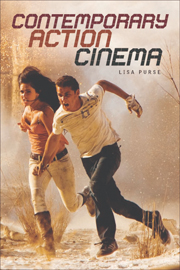Book contents
- Frontmatter
- Contents
- Illustrations
- Acknowledgements
- Introduction: ‘Where are we, and how did we get here?’
- 1 Narrative and the action film
- 2 The action body
- 3 The action sequence
- 4 Action women
- 5 Action men
- 6 Race in the action film
- 7 Homosexuality in the action film
- 8 Action cinema after 9/11
- 9 The ‘European connection’
- Afterword
- Bibliography
- Filmography
- Television Series
- Index
1 - Narrative and the action film
Published online by Cambridge University Press: 05 August 2013
- Frontmatter
- Contents
- Illustrations
- Acknowledgements
- Introduction: ‘Where are we, and how did we get here?’
- 1 Narrative and the action film
- 2 The action body
- 3 The action sequence
- 4 Action women
- 5 Action men
- 6 Race in the action film
- 7 Homosexuality in the action film
- 8 Action cinema after 9/11
- 9 The ‘European connection’
- Afterword
- Bibliography
- Filmography
- Television Series
- Index
Summary
So tired is Avatar's tale that you hardly notice it. The film is mere spectacle, about as emotionally engaging as the associated videogame. Perhaps the importance attached to this game tells us what Fox's bosses were up to. Maybe they reckoned that the digital-native audience has moved on from concern with motive, thought and feeling … thinking like this seems pretty pervasive in Hollywood.
(Cox 2009: paragraphs 4–5)Action cinema has a reputation for narrative paucity, for giving spectators all action and no plot, a reputation that seems to have gained further traction with the increasingly ubiquitous and frequently exhibitionist use of digital effects in action sequences. The action fantasy Avatar (directed by James Cameron) was released at the end of 2009 to great fanfare, promising a spectacular display of ground-breaking digital 3D and motion capture technologies. However, those same qualities made it vulnerable to the criticism of ‘too much’ spectacle in certain quarters of the media. David Cox's on-line article for the British newspaper The Guardian, published three days after the film's UK theatrical release, is unrelentingly dismissive of the film. Calling it ‘mere spectacle’, the journalist blames Avatar's spectacular nature for what he sees as its lack of narrative engagement. For Cox, the narrative is not just outdated but almost completely absent, a situation he suggests is caused by an assumption by studio executives and filmmakers that audiences are no longer interested in the subtleties of characterisation and narrative motivation (‘motive, thought and feeling’).
- Type
- Chapter
- Information
- Contemporary Action Cinema , pp. 21 - 36Publisher: Edinburgh University PressPrint publication year: 2011



